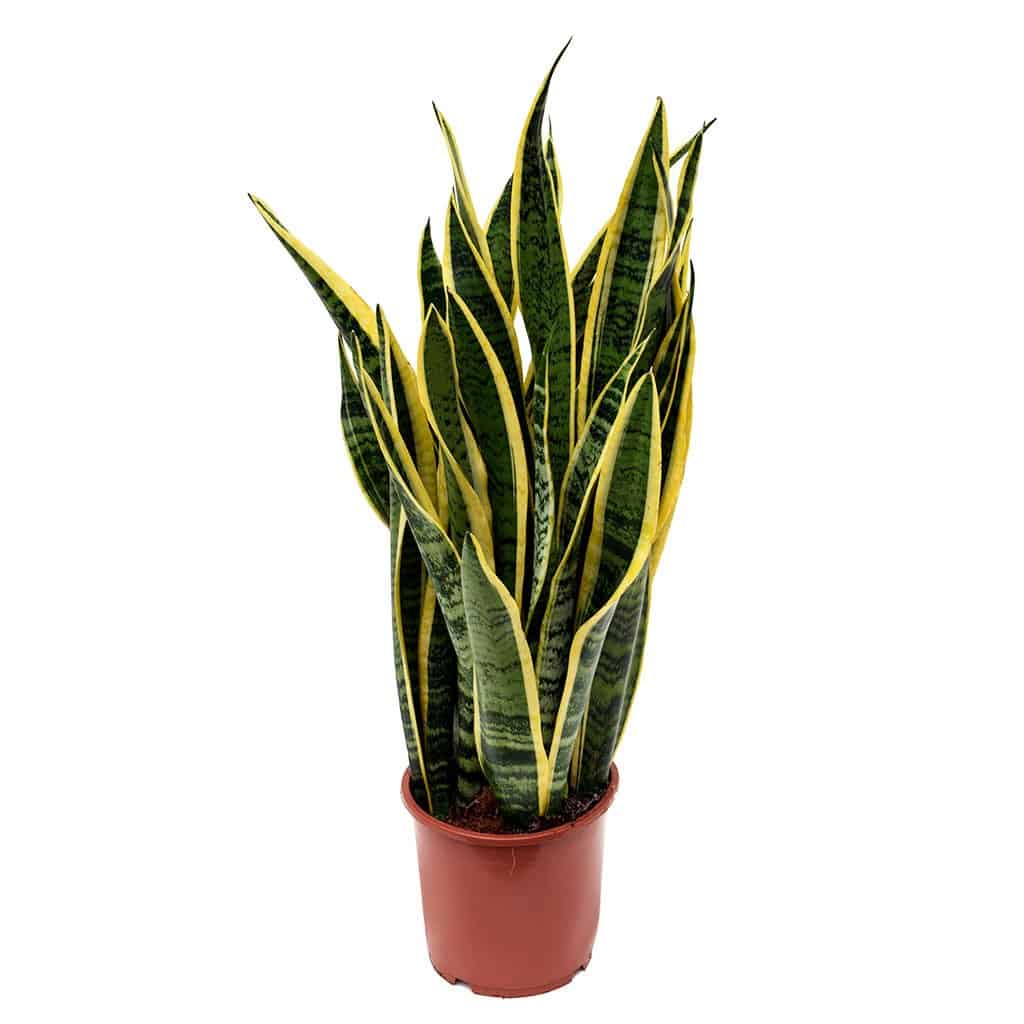How To Grow A Snake Plant And Snake Plant Care – Expert’s Guideline
by Lee Safin
If you’ve been part of a plant community, you’ve probably encountered people arguing about which one is better. Finding the best plant depends on your personal preference.
But if we make a list of the most beneficial and tolerant plants, one name would definitely stand out Snake Plant.
Growing a snake plant is a simple process of the combination of four gradual steps. At first sharp scissors, then collect a heavy jar or glass bottle, put some water and finally add some chemicals.
By following these four simple steps you can easily grow a snake plant in your house. However, we discussed in detail “how to grow a snake plant” in this article.
The Snake Plant, also known as Sansevierias, is an easy-going plant with a handful of advantages. From the garden to your veranda, snake plants can grow anywhere. But to maintain this carefree routine, there are certain things that you need to follow.
We’ll talk about the simplest and easiest ways to take care of this very plant. To know about these in detail, keep reading this article. We assure you that you’ll be able to prepare yourself to make this plant a houseplant in the end!
Contents
- How To Select The Appropriate Snake Plant
- Types of Snake Plant
- How to Grow a Snake Plant in Simplest Ways
- Step 1 – Cut the leaf
- Step 2 – Dip in the water
- Step 3 – Plant in the soil
- What Are The Common Issues With Snake Plants?
- How to Care for Snake Plant (A Complete Snake Plant guide)
- Why would you Consider Snake Plant as your Household Plant?
- Is Snake Plant Toxic?
- Final Words

How To Select The Appropriate Snake Plant
Snake plants are native to Southern Africa and are prone to soggy soil and hot weather. Before considering this plant in your regular planting list, make sure you know its specifications and varieties.
Types of Snake Plant
They are of more than 60 types, but some are worth searching for-
1. Sansevieria Gracilis
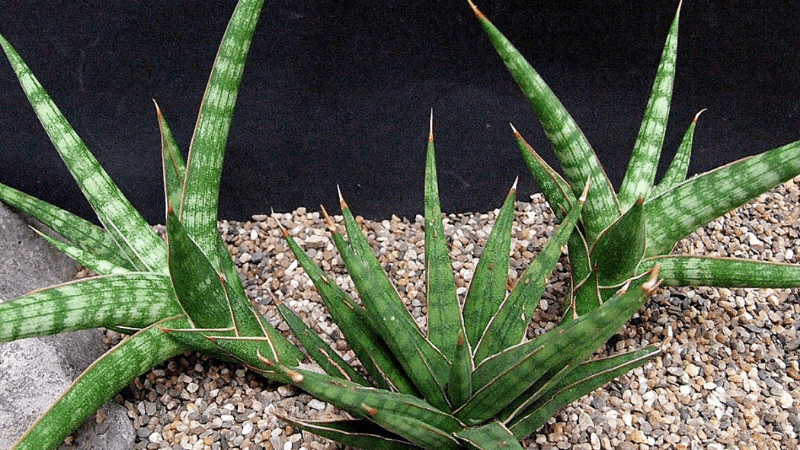
Sansevieria Gracilis, also known as Cylindrica, is a common variety of this species. The unique part about this one is, they have different green shades in their leaves. Also, the leaves are tubular in large shapes.
It blooms in late autumn and produces greenish-like white flower extensions. The cylindrical leaves grow up to 2m, and the thick base it has at the middle is about 2.5cm. Their fan-shaped width is the most attractive part that draws attention.
This specific species of Sansevieria grows better on bright days. A small glimpse of the sun can also do. But the Cylindrical Snake plants can not grow fruitfully in a dark ambiance. So, raising it as a container plant is the best option.
2. Sansevieria Masoniana
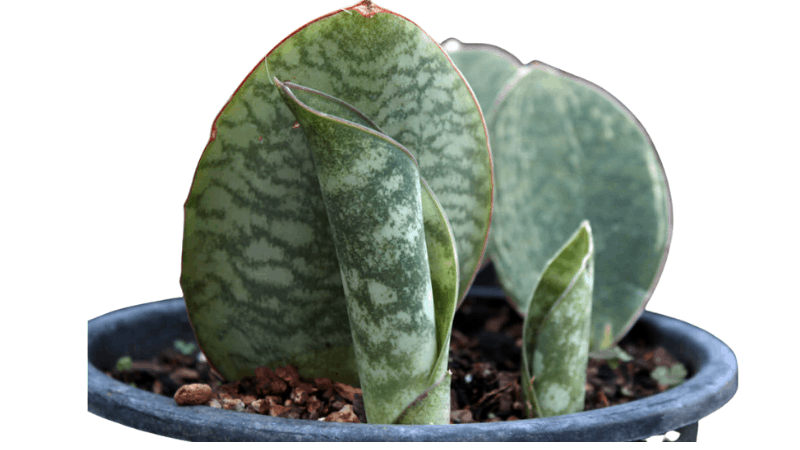
Also known as Shark’s Fin, this species has the broadest leaves found in this category. The leaves are 4 feet long, and the oval shape elongates about 25cm. These are one of the most attractive-looking plants with a mix of golden and green colors.
On the other side, its care process is very easy compared to other species. It would help if you watered them when the soil lacks water. But never leave it in standing water, or else it will soak more water than required.
One thing to never forget is, Masoniana species need light more than any other. Without brighter light, it won’t offer the best features it has.
3. Sansevieria Trifasciata
This species is an evergreen snake plant with beautiful, golden edges. The top part is a sword-like shape and grows in abundance. The plant generally doesn’t bloom in typical weather. But if it does, then it gives greenish-white leaves.
You can plant it indoors with a bit of concern. Be sure to keep it on the sun- side to give it more light. But most of the time, the problem that occurs is, extra sunlight burns the leaves. In addition, the freezing environment makes it even worse.
So, if you consider this plant as your balcony addition, make sure to implement these matters and then collect them.
4. Sansevieria Bali

This one is famously known as Dwarf Sansevieria. As its name suggests, the plant grows up to 10cm long and 15cm tall. Eventually, as it grows, it turns into a rosette pattern with pale colors. The colors look like a faded version of light- yellow.
This cute-looking dwarf plant can grow in brighter as well as dark places. But their vibrant color would dwindle if there are not enough sources of light.
How to Grow a Snake Plant in Simplest Ways
Our common misconception about this plant is you need to go out in search of this. The most confusing question that arises commonly is, “How to grow a Snake Plant and how to care for a snake plant?” Whereas the actual thing is, the propagation of these snake plants is very easy to do in your house.
Knowing these ways, you will be able to grow this plant from a cutting, all by yourself. There are many ways to propagate this very thing in water, soil, ant, and rhizome. But here, we will talk about the propagation of snake planting in water and also about the Snake plant guide.
This way is way more beneficial as the cuttings do not waste because of the process. You can use the leftover leaves you generally cut down to adjust the outlook.
Materials you’ll need to grow a snake plant from cuttings
- Sharp scissors.
- Heavy jar or glass bottle.
- Water.
- Chemicals (like rooting hormones)
Step 1 – Cut the leaf
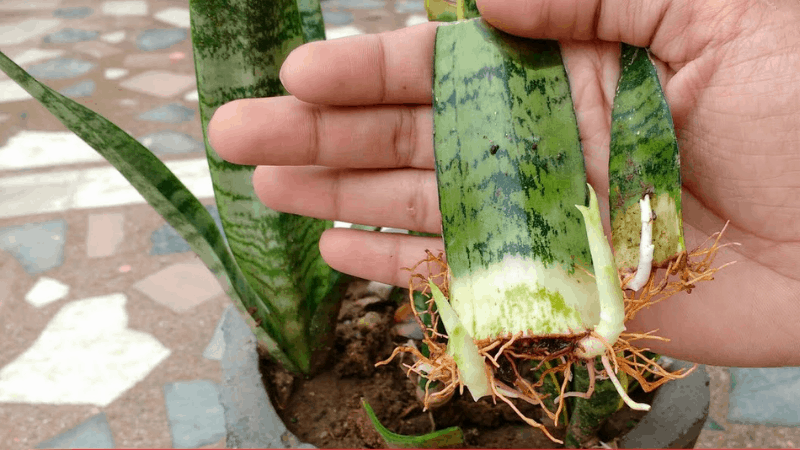
Use a sharp scissor to cut a specific leaf with fresh root. If the leaf does not look new, skip that because a leaf with a dull edge or core would not grow on a smooth note.
After choosing a perfect leaf:
- Use one hand to uphold that leaf and use the scissor.
- Cut slowly but smoothly.
- Remember that the sharper the cut is, the nicer the structure of your plant would be.
Step 2 – Dip in the water
Once you are done with the 1st step, prepare the water to dip that leaf in. You can use a heavy jar like- mason jar or glass mug.
To use any chemical ingredients to grow it faster totally depends on your preference. But if you wish to use any, try to dip it before placing it in the water.
Now place the leaf in the water in a way that it covers 30% of the water. But if the size is more prominent for a shape like- V or T. A critical thing about this plant is that it will only grow new roots if you keep the leaf in the water near the soil. It might take one month or a bit more to sprout. So don’t forget to place it in the proper orientation!
Step 3 – Plant in the soil
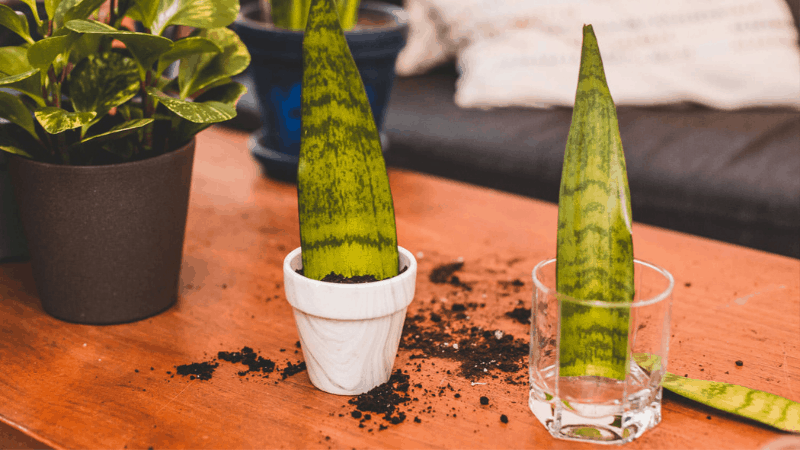
After the leaves have sprouted, you’ll see some small shoots on edge. Those are just extensions, so nothing to worry about. Now plant the leaf deep as the waterline when it is in the jar. Not more, not less.
Water it every week at least once. It might take a bit more time. But for sure, this one is the easiest of any other method.
What Are The Common Issues With Snake Plants?
Nothing is beyond the range of problems. Snake plants are indeed elementary to be a new addition to your balcony. Still, you are yet to find some issues regarding how to grow a Snake Plant.
Curly Leaves
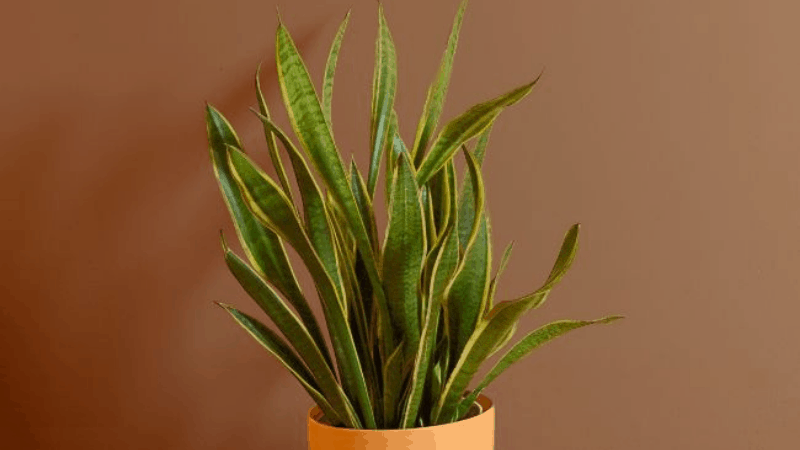
Leaves are the main thing that shows how healthy or faded your plant is. Often, you might see some curly shape on the top portion of your leaves. Don’t worry, it happens!
The significant probability for being in this state is- Thrips. It occurs because of a tiny insect that attacks the plant and doesn’t go away suddenly. To get rid of it, shake it with a sheet of paper on the top. If any black bug-like insect falls, be sure of thrips.
If it’s not, then you need to check if your plant is overwatered.
Soggy Leaves
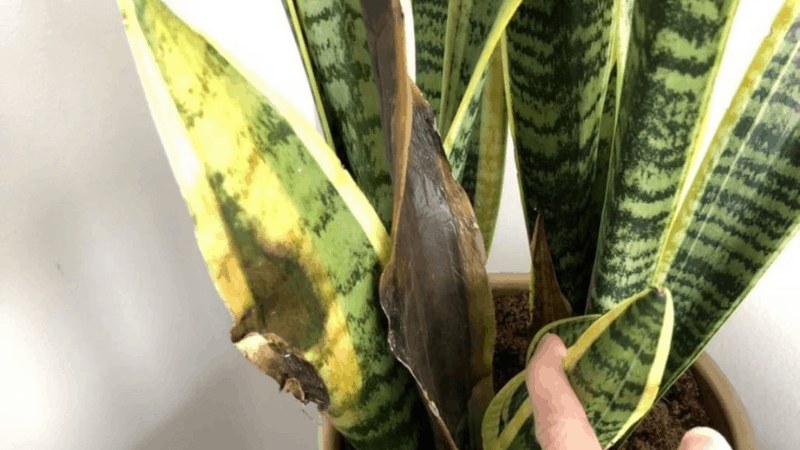
When you have determined about collecting a snake plant, it’s compulsory to know specific rules. Such as you can’t water your plant when it’s already wet. If you don’t do so, the plant would be over-watered.
This thing would lead to a common disease named- soggy or missy leaves. It also can be a reason for root- rot. Both of these can happen due to slight ignorance. Remove your plant from the pot and check it.
If you feel over moisturized soil, it is the cause of over-watering. And if the water line is perfect, you have to be more cautious about the root.
Dry Brown Leaves
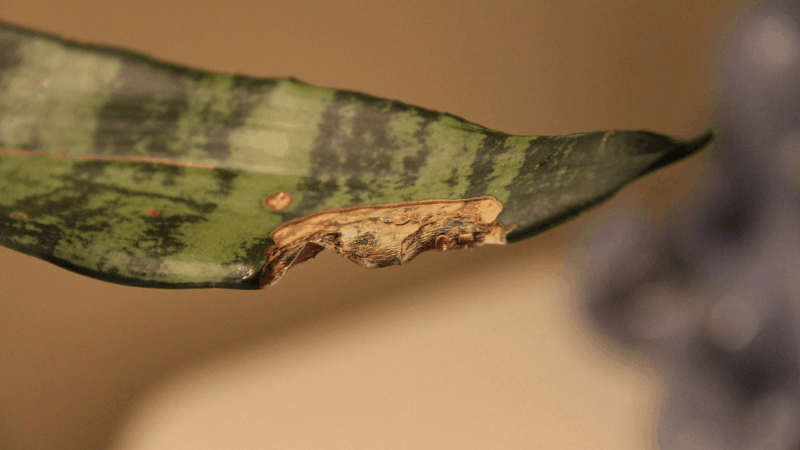
In general, we know that dry parts of a plant are caused by over-dry weather. In the case of snake plants, it’s nothing different!
If you see any browny shade on the edge of your plant, the most likely thing is, you forgot to water it for a long time.
Though we know snake plants are very tolerant in terms of weather, they also have a limit. When it’s over, they show us those dry tips as an alarm.
Growth Problems
At first, diagnose if the problem is with the plant or the environment it is placed in. Some species of this plant generally grow slower than any other one. So, it’s not a problem at all!
If not, the problem is with the lighting. When the leaves do not get enough light, they can’t grow as usual. Try to place it in some other areas and wait till summer. Hopefully, it will grow faster than earlier.
How to Care for Snake Plant (A Complete Snake Plant guide)
Buying a plant is easy; plantations also don’t take so many hurdles. But what makes it tricky is the overall care it needs.
If we compare the caring session of these plants with other household plants, supervision of snake plants is relatively more accessible. But that doesn’t mean you don’t need to take care of it!
Following are some excellent tips about how to care for snake plants in some simplest ways that offer you a clear snake plant guide:
Check The Soil
There are not enough elements to think about the soil. Snake plants easily adjust most of the soil- situations. But a serious- soil problem is known as root- rot creates some hindrance that results in the death of the plant.


There are some ways to use this soil itself as a preventive measure. We suggest succulent soil mix with a common cactus. Next, combine this mixture with a bit of potting soil. You can make it heavier or lighter according to the category of your plant soil.
Perlite also works fine into this.
Ensure Enough Watering
Water is the primary element to any of the plants, but not to snake plants. What I mean is, of course, the plants need water to grow. But the snake ones are succulent. It means they can preserve water.
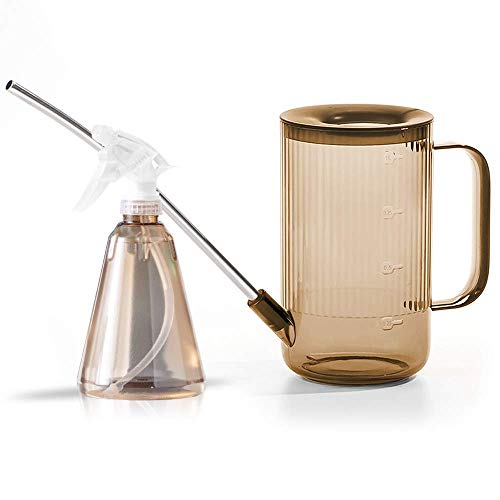

In addition, the plant only opens its stomata at night. At the same time, other plants remain open all day long. That’s why it spends less water than the other plants. So, it doesn’t need regular watering.
Once in two weeks is an acceptable schedule to water the plants. This regularity would change regarding seasons. For example- the rainy season. This season, as the plants would get enough water every now and then, you can skip watering each week and do it two times per month.
Ensure Ambient Temperature
Snake plants are competent for hot or cold weather. I mean, that’s why they are called one of the most tolerant plants, right?


The preferable temperature ranges from 55 to 80 degrees. But they can tolerate up to 90 degrees as well. The problem with this plant occurs when the temperature goes lower. Snake plants can’t live under 50 degrees. So, keep checking the weather and take the necessary steps regarding that.
Give The Best Fertilizer
This point can prove as a life-saver option, as well as the killer evil. If you use fertilizer to a decent limit, it will help your plant grow. That time is at most twice in summer and spring.
In contrast, if you use it more than three times, it would drastically change the condition. In the end, your plant would die.
Best Fertilizer for Snake Plant
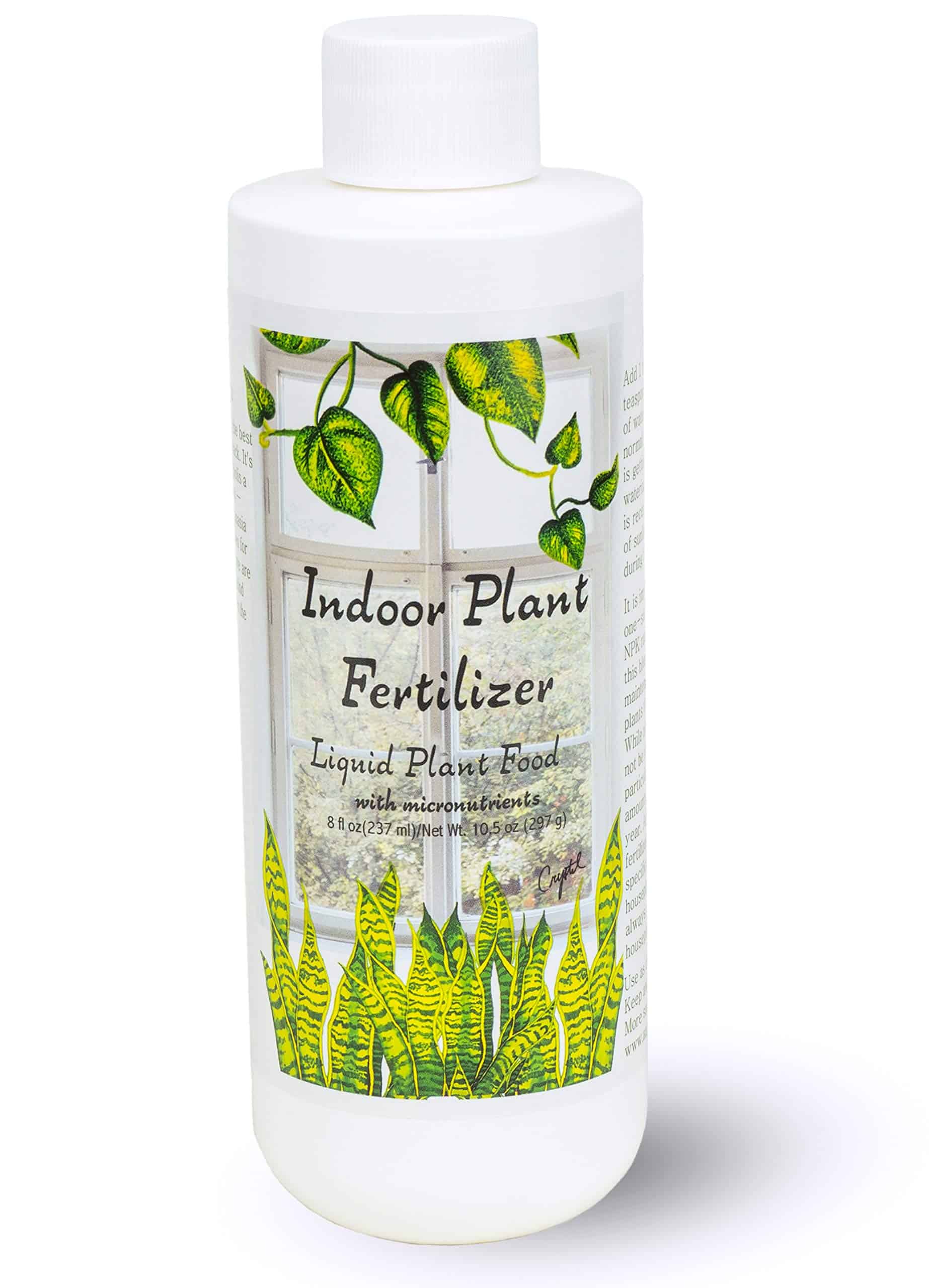
Light
As we have already mentioned, Snake Plants can handle any situation precisely. If you place it in a direction where sunlight comes fruitfully, it will grow steadily. But if not, no problem to be tensed about!
The plants can turn to the light themselves once they understand the lack of light. But if you want a suggestion, then indirect sunlight is more preferable according to us.
Read More – Best Led Light For Plant Growth
Why would you Consider Snake Plant as your Household Plant?
Plants come in a wide variety of shapes and sizes with different benefits. Each one has a collective taste and outlook to offer. After knowing everything about How to grow a Snake Plant, finally, it’s time to unfold the advantages.
All plants’ common advantage is the absorption of carbon dioxide and the inflation of oxygen.
Besides, we get to see different plants whose sole purpose is to clean and purify the environment of various toxic substances.
We call these plants “Air- Purifying Plants.” According to this category, Snake plants are the most considerable ones to be added to our regular day list because of their characteristic to purify the air.
Oxygen Dilation
Whether we know about the specifications of green plants or not, one common thing we know is that any green plant produces oxygen. It is essential for our survival as human beings on this planet.


Snake Plant, on the other hand, is one of the most oxygen-producing houseplants. There is a saying that if you remain happy mentally, all your physical pain would eventually be gone. When the flow of oxygen in your home or workplace increases, the mood will improve as well. You’ll be less depressed as a result!
Removes Allergic Pollutants
Snake Plants minimize airborne allergies on a higher note. According to a NASA Clean Air Report, Snake Plant can eliminate four of the five potent toxins linked to sick building syndrome. Besides, it removes toxic pollutants like- carbon dioxide, formaldehyde, xylene, and toluene compounds. As a result, It works as a natural cleaner that will protect you from most allergies.


You can use it as an alternate of snake plant to get allergic pollutants-free room.
The plants help mix oxygen with air-purifying qualities to get fresh air to breathe and a tight sleep at night.
Produces Oxygen At Night
One of the most beneficial and unique things you’ll get is, Snake Plants reduce carbon dioxide in the environment even at night! This type of photosynthesis at night is known as Crassulacean Acid Metabolism or CAM. Not every plant possesses the ability to produce oxygen at night. Only drought and dry-tolerant plants can have this ability.
To talk about Succulents, Snake plants are the ones with the best CAM performance. As a result, you can sleep soundly at night.
Is Snake Plant Toxic?
Snake Plants do have some toxic ingredients that in terms can cause you so much harm. Mainly, it can prove to be hazardous to your pet like- cat or dog.
But entirely, we can’t call it poisonous as it has “Saponins.” It’s a natural chemical produced by the plant itself to secure the pets from insects, fungi, or any other type of harmful parasite.
According to ASPCA, you’ll find a good list of poisonous chemicals for your pets here. It’s also mentioned there that Snake plants are not toxic plants; it might cause some intestinal upset to your pets at most.
Read More – Do Snake Plant Purify Air? 8 Benefits of Having Snake Plant In Your House?
Final Words
We’ve already discussed all the topics you might come across regarding Snake plants. As a whole, these things would guide you through all your confusion.
So, whether you are a plant lover or just a beginner, we would suggest you give it a try. It’s a promise that you won’t regret!
Also, if you have anything to ask, don’t hesitate to ask!
Last update on 2023-01-28 / Affiliate links / Images from Amazon Product Advertising API
Buy on Walmart, eBay, or Etsy
Heavy jar or glass bottle - Etsy, eBay
 |
 |
 |
 |

About Lee Safin
Lee Safin was born near Sacramento, California on a prune growing farm. His parents were immigrants from Russia who had fled the Bolshevik Revolution. They were determined to give their children a better life than they had known. Education was the key for Lee and his siblings, so they could make their own way in the world. Lee attended five universities, where he studied plant sciences and soil technologies. He also has many years of experience in the U.S. Department of Agriculture as a commercial fertilizer formulator.
Thoughts on "How To Grow A Snake Plant And Snake Plant Care – Expert’s Guideline"
 |
 |
 |
 |
Get FREE Gardening Gifts now. Or latest free toolsets from our best collections.
Disable Ad block to get all the secrets. Once done, hit any button below
 |
 |
 |
 |
